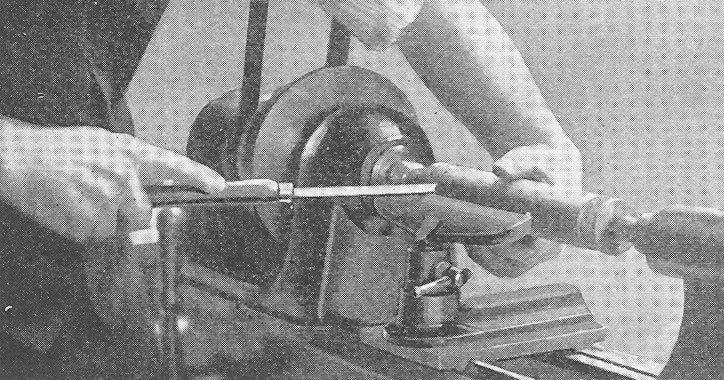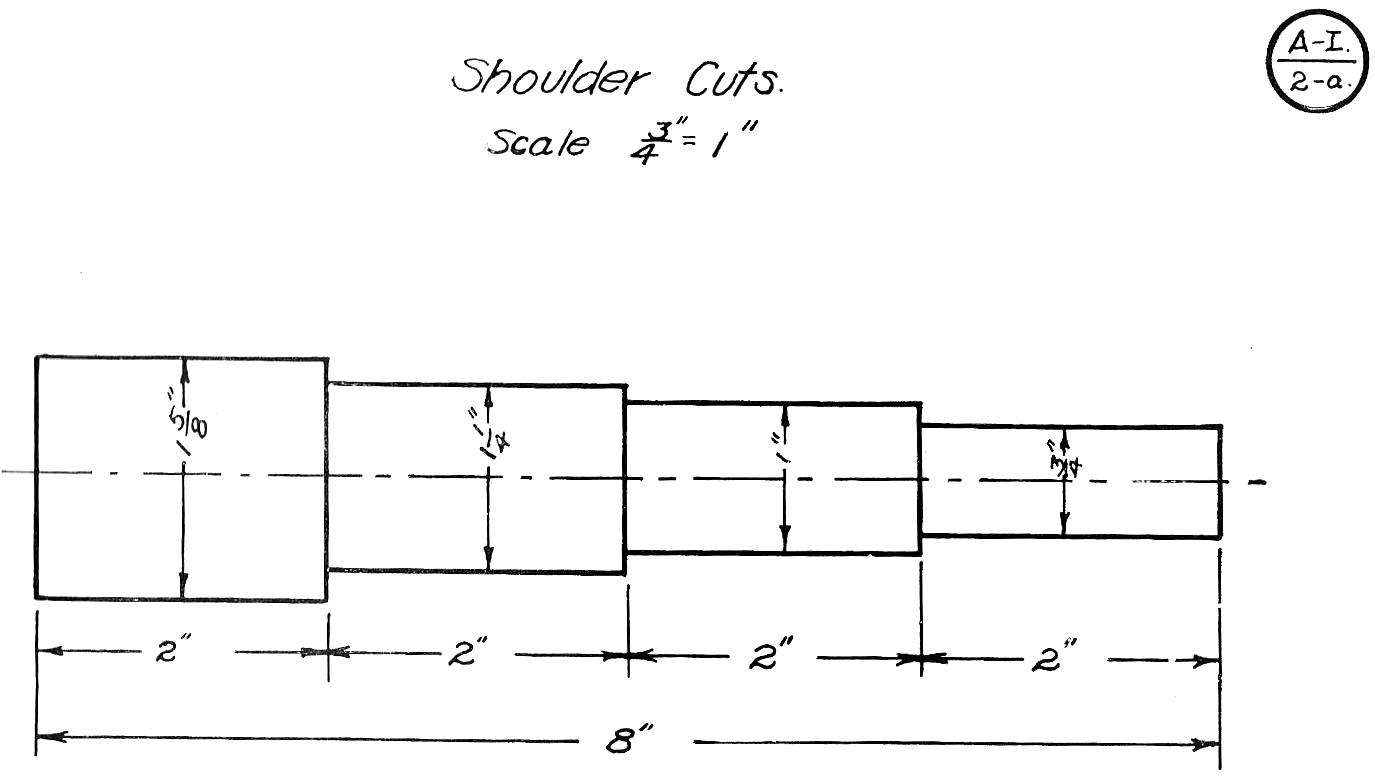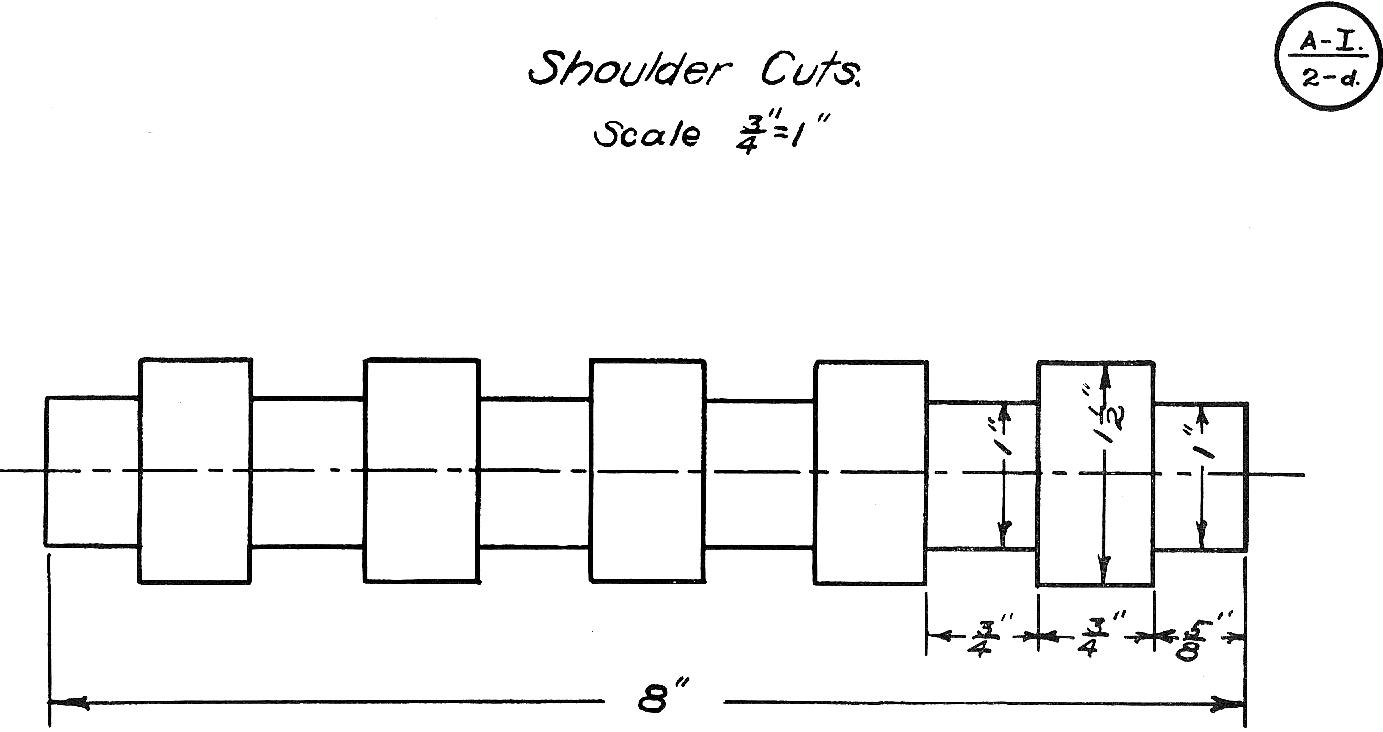|
7. CUTTING OFF (SMALL SKEW). FIG. 9.
After both ends have been squared, cut away stock, at both ends, to leave just enough to hold the cylinder from separating from the waste ends.
With the chisel held in the right hand in the same position as in squaring the ends, and the fingers of the left hand around the stock to catch it, slowly force the point of the chisel into the stock at the live center end, until it is cut free and the cylinder stops in the operator’s hand. Too much pressure should not be used in this operation or it will cause the cylinder to twist off instead of being cut, and will leave a ragged hole in the end.
The dead center end, which has been scored heavily before cutting off at the live center, is then removed by holding the grind of the chisel flat on the end of the cylinder. The latter is revolved by hand until the stock is cut away.
|

FIG. 9
|
|
Exercise A-I-2-a

Exercise A-I-2-b

Exercise A-I-2-c

Exercise A-I-2-d

|
Exercise A1-2a
Shoulder Cuts
1. Turn a cylinder to the largest diameter required.
2. Lay off measurements with rule and pencil.
3. With the gouge (where space permits) or the parting tool (in narrow spaces) rough out surplus stock,
keeping 1/16” away from the lines indicating shoulders.
4. Caliper to the diameter of the second step.
5. The shoulders are cut down as described in "Squaring Ends, Step 6, Straight Cuts.”
6. The new diameter or step is then trued up with a skew chisel in the same manner as a cylinder; except
that in nearing the shoulder the chisel is pushed up on the cylinder until the heel, which is the only part that can be worked into the corner, becomes the cutting point.
Fig. 10. In very narrow steps it will be advisable to use the heel entirely as a cutting point.
In spaces between shoulders, too narrow to permit the use of the skew chisel, very effective work can be accomplished by slightly tipping the parting tool sideways to allow a shearing cut to be taken with the cutting edge.
7. Where several steps are required on the same cylinder, each successive one is worked out as above described.
Note :—All preliminary steps in working stock to size, laying of dimensions, etc., in preparation for the exercise in hand, will be omitted in the following exercises:
|





